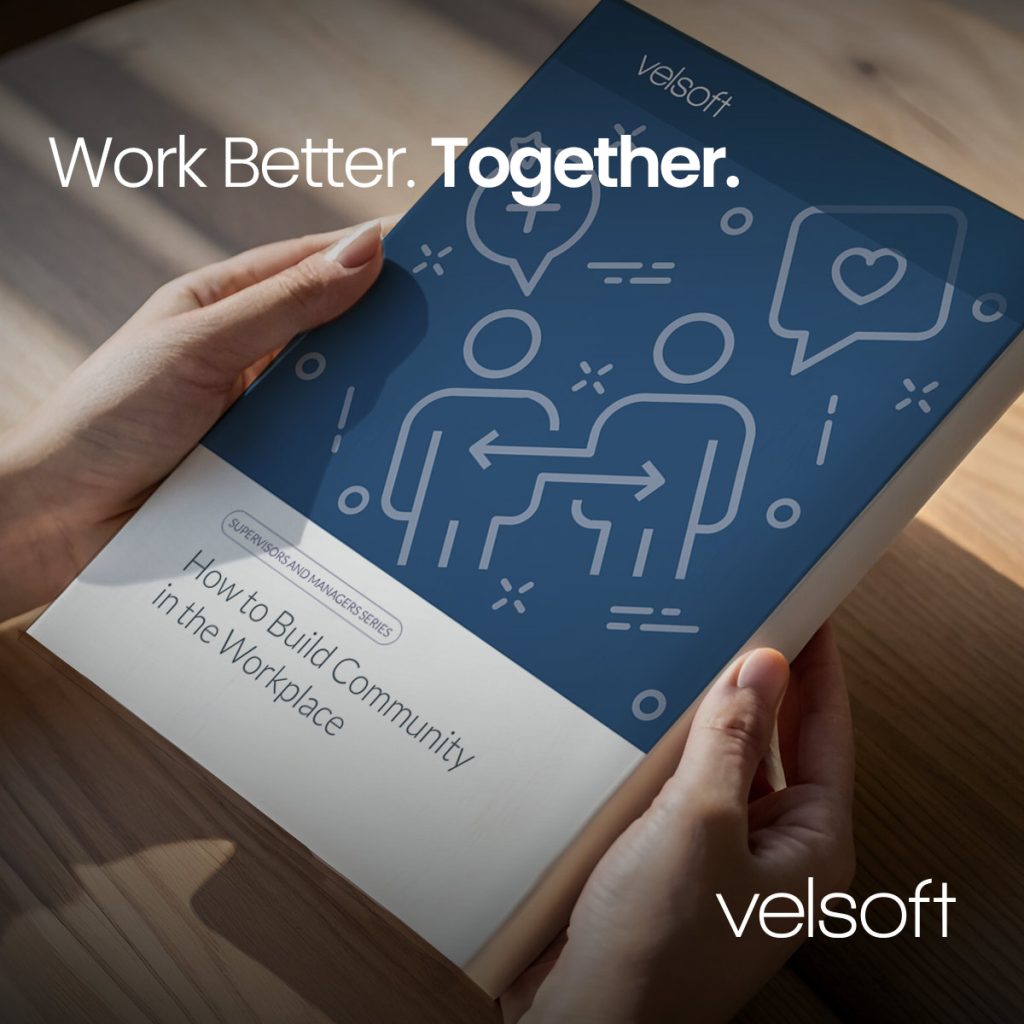How to Build a Thriving Community in the Workplace
A strong sense of community in the workplace is the key to deeper connections, better collaboration, and a more positive environment for everyone. This is not a new concept, but in an age of flexible work arrangements and evolving employee expectations, it has become more important than ever. From fostering trust and open communication to celebrating achievements, building a vibrant workplace community can make people feel motivated, respected, and part of something meaningful.
Based on Velsoft’s new course, “How to Build Community in the Workplace,” this guide explores the essential building blocks you need to cultivate a strong sense of community in your own organization.
What is Community in the Workplace?
A workplace community is a dynamic and supportive network where employees feel a powerful sense of connection, belonging, and shared purpose. It’s a place where people work together effectively, not just side by side. This environment is built on mutual respect and open communication, and it values differences while committing to work through conflict constructively.
According to research from the O.C. Tanner Institute, companies with a strong workplace community share eight key elements:
- Shared goals
- Commitment
- Communication
- Feedback
- Camaraderie
- Trust
- Adaptation
- Unity
The O.C. Tanner Institute refers to these elements as the Community Index. Organizations with high rankings on the Index see significant benefits, including longer employee tenure, a lower probability of staff seeking new jobs, and higher odds of employees feeling a sense of belonging.

Core Pillars of a Building a Strong Workplace Community
Building a workplace community is not something that happens by chance. It requires intentional effort focused on three core pillars:
1. Trust and Communication
Trust is the bedrock of any healthy workplace community. It is built on psychological safety, where employees feel comfortable speaking up, offering opinions, and sharing ideas without fear of judgment or punishment.
To foster this, leaders must lead by example with open and transparent communication. This means sharing information honestly, actively listening, and being approachable for questions and feedback. Using multiple communication channels and establishing regular feedback loops, like surveys, can also help.
Another key aspect is reliability. When team members and managers consistently follow through on their commitments and show accountability, it builds confidence and strengthens relationships. For example, a team member who consistently meets deadlines and communicates early about any delays demonstrates reliability and trust.
2. Inclusion and Belonging
An inclusive workplace is one where every employee feels genuinely respected, valued, and recognized for their unique experiences and perspectives. It’s a culture that sees differences as strengths.
To put inclusion into practice, workplaces should consider implementing things like:
Flexible work arrangements to accommodate diverse needs and life circumstances.
Recognizing diverse holidays.
Bias-aware hiring practices to promote equitable access to opportunities.
Ensuring accessibility by providing quiet workspaces, removing physical accessibility barriers and using accessible communication tools.
An inclusive environment is crucial because it ensures that all employees, regardless of their background, can fully engage and contribute. This, in turn, fuels creativity, innovation, and long-term success.
3. Recognition and Celebration
Meaningful recognition is vital for building a strong community. It signals that individual efforts make a real difference, which deepens an employee’s sense of purpose. Recognition should not be limited to major accomplishments but should also include small, everyday wins, such as finishing the first week in a new role or a customer compliment.
Both manager-to-employee and peer-to-peer recognition are important. A simple verbal thank-you in a team meeting or a public shout-out on a company communication channel can have a significant impact. When recognition is a regular part of the culture, it meets the fundamental human need to feel seen, appreciated, and respected.
Ready to Build Community in the Workplace?
Building a strong workplace community is a continuous and rewarding journey. The concepts of trust, inclusion, and recognition are not just management strategies; they are the building blocks of a workplace where people feel seen, supported, and motivated to do their best work.
To learn more and get started on building a community in your workplace, visit the Velsoft course page to download a free sample or a quick reference guide from the “How to Build Community in the Workplace” course.


